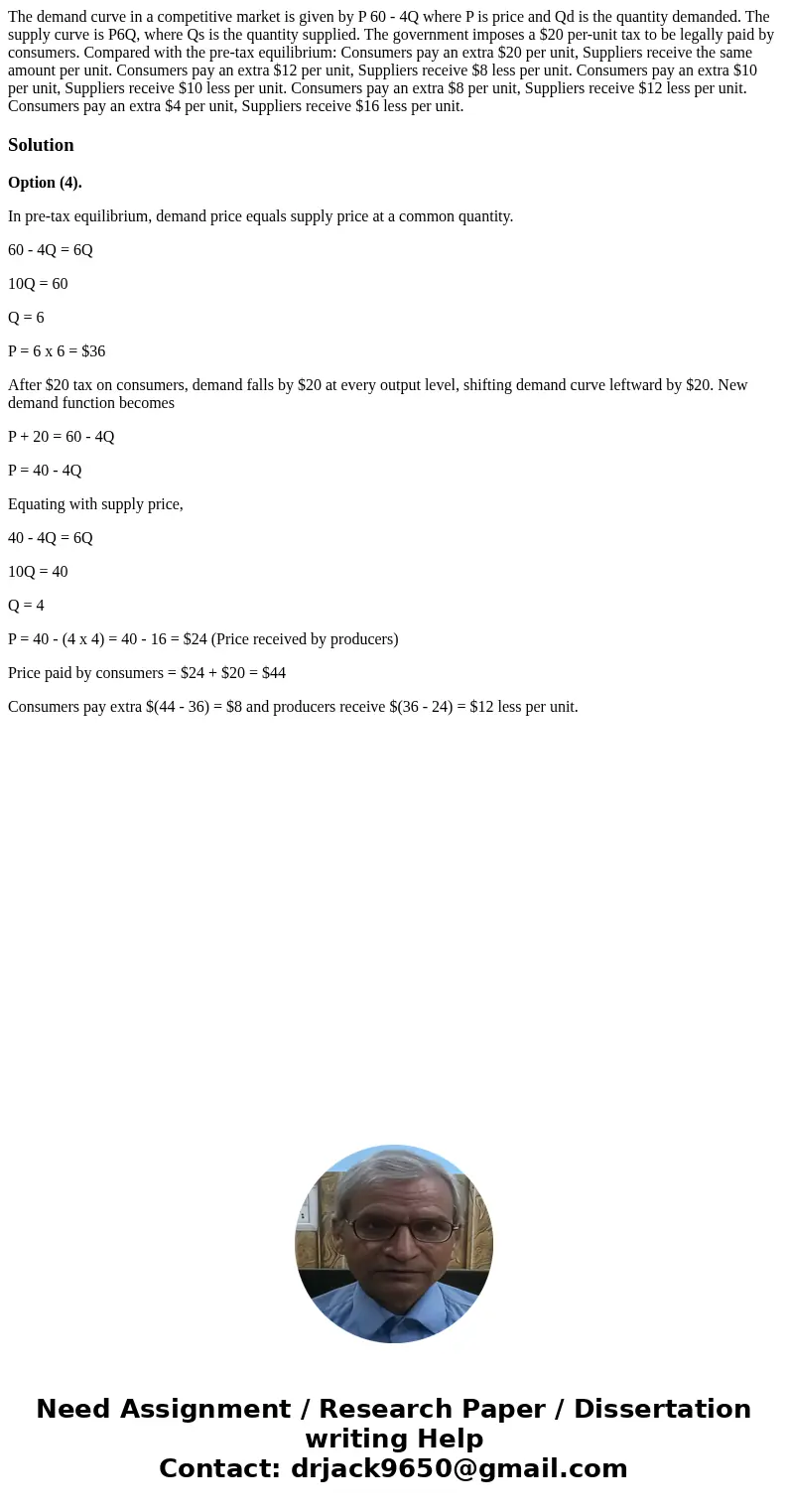The demand curve in a competitive market is given by P 60 4
The demand curve in a competitive market is given by P 60 - 4Q where P is price and Qd is the quantity demanded. The supply curve is P6Q, where Qs is the quantity supplied. The government imposes a $20 per-unit tax to be legally paid by consumers. Compared with the pre-tax equilibrium: Consumers pay an extra $20 per unit, Suppliers receive the same amount per unit. Consumers pay an extra $12 per unit, Suppliers receive $8 less per unit. Consumers pay an extra $10 per unit, Suppliers receive $10 less per unit. Consumers pay an extra $8 per unit, Suppliers receive $12 less per unit. Consumers pay an extra $4 per unit, Suppliers receive $16 less per unit. 
Solution
Option (4).
In pre-tax equilibrium, demand price equals supply price at a common quantity.
60 - 4Q = 6Q
10Q = 60
Q = 6
P = 6 x 6 = $36
After $20 tax on consumers, demand falls by $20 at every output level, shifting demand curve leftward by $20. New demand function becomes
P + 20 = 60 - 4Q
P = 40 - 4Q
Equating with supply price,
40 - 4Q = 6Q
10Q = 40
Q = 4
P = 40 - (4 x 4) = 40 - 16 = $24 (Price received by producers)
Price paid by consumers = $24 + $20 = $44
Consumers pay extra $(44 - 36) = $8 and producers receive $(36 - 24) = $12 less per unit.

 Homework Sourse
Homework Sourse